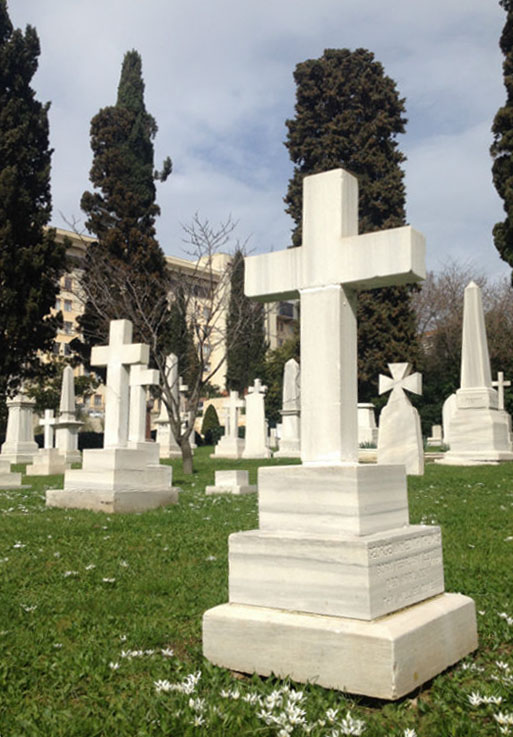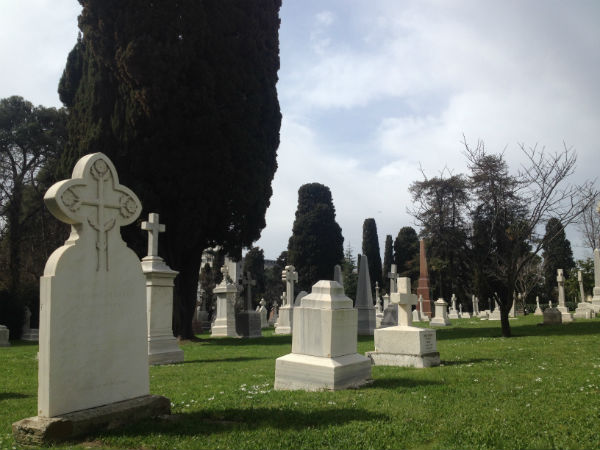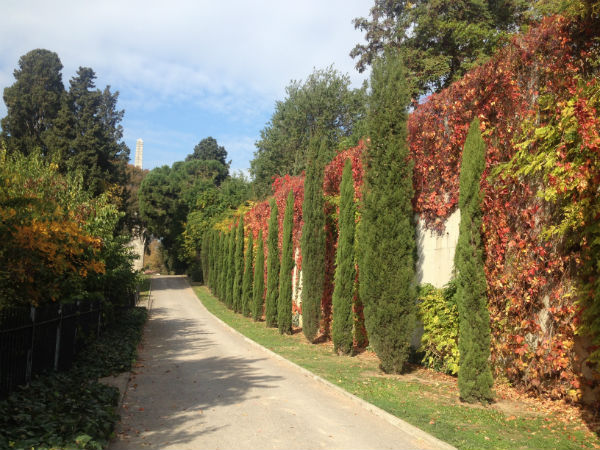As a long-time lover of cemeteries, I’m often telling people about my trip to this or that burial ground. Most have one question: “why?” In short, cemeteries are places where you can hear yourself think. And in big cities, particularly Istanbul, they are a refuge from the constant whirl of traffic, street vendors, and agonizingly slow pedestrians. This is reason enough for a handful of enthusiasts.
Haydarpaşa Cemetery in Üsküdar has far more than these traditional virtues. Without a doubt the most significant collection of English graves in Istanbul, its grounds stretch between Haydarpaşa Eğitim Hastanesi and the old grain elevator – an oddly bucolic strip of green in this rusting industrial district. This position on the fringe of Üsküdar and Kadıköy hints at the cemetery’s place on the edge of the Istanbul’s modern memory.
Sultans dating back to Suleiman once had waterfront estates in this depopulated area. Since transformed into the terminus of all Anatolia, it is now epitomized by the seven brownstone stories of Haydarpaşa train station. Now, despite a recent announcement, the station and even the nearby industrial port are more or less defunct. Also somewhat forgotten is the area’s history, where Florence Nightingale made her reputation as a nurse in the Selimiye barracks. Dying by the thousands of their wounds and disease, many of the British soldiers she tended are buried just a few meters away, within sight of the ferries which pass by daily to ports across Istanbul.

With its old trees and sea breezes the cemetery is a model of the Arcadian style. But the beauty of the place is only a prelude to its more fascinating history. Founded in 1855 to serve the Crimean war dead, the cemetery was used for the same purpose during WWI, WWII, and the periods in between. Soldiers’ bodies and ashes have been gathered up from battlefields, hospitals, and camps across the region.
The cemetery was later opened to the greater English-speaking community. Roughly half of the deceased are civilians. They are often from well-established families, most notably La Fontaine, Maltass, and Whittall, whose intermarriages can be read in lines between the stones.

Consider Julius van Milligen who travelled from Scotland to fight for Greek independence with Lord Byron. While serving as a military physician against the Ottomans in Greece, he was captured by the famous Ibrahim Pasha. Eventually freed, he made the rather odd decision to settle in Istanbul. He was court physician to five sultans. Marrying into the La Fontaine family, his son became a Byzantine Archaeologist who lived and died in the adopted city of his father.
An even less pedestrian figure is Edmund Moubray Lyons, esquire. Son of the commander of the British Black Sea fleet, he “achieved a series of brilliant and most important successes” aboard the H.M.S. Miranda during the Crimean War. He was wounded while attacking Sebastopol and died at Terabya in June of 1855. His is one of many memorials purchased by fellow soldiers on behalf of admirals, officers, quarter masters, and common soldiers.

The diversity of the cemetery, however, is just as impressive as its dead Englishmen. Tombstones were carved and shipped from London, Greece, and Galata. Their owners are English, Scottish, Irish, Greek, Hungarian, Russian, German, French, and Canadian. An entire section has been set aside for Indian nationals who served in the British military. The oldest graves are from the Crimean War, 1854-1856. The most recent, 2010. There are doctors, lawyers, translators, secretaries, hotel clerks, ambassadors, soldiers, and even English teachers who died of wounds, disease, drowning, and old age.

Long before the first, second, and third bridges announced the city’s rise to a truly intercontinental megalopolis, there was a community of foreigners in Istanbul. Though their daily lives remain somewhat opaque, the modern yabancı will find something in common with his or her predecessors in Haydarpaşa cemetery. Now as 150 years ago, this city makes an impression on us all and has left us, in life or in death, with something to say.
All images courtesy of Will Gregg.









